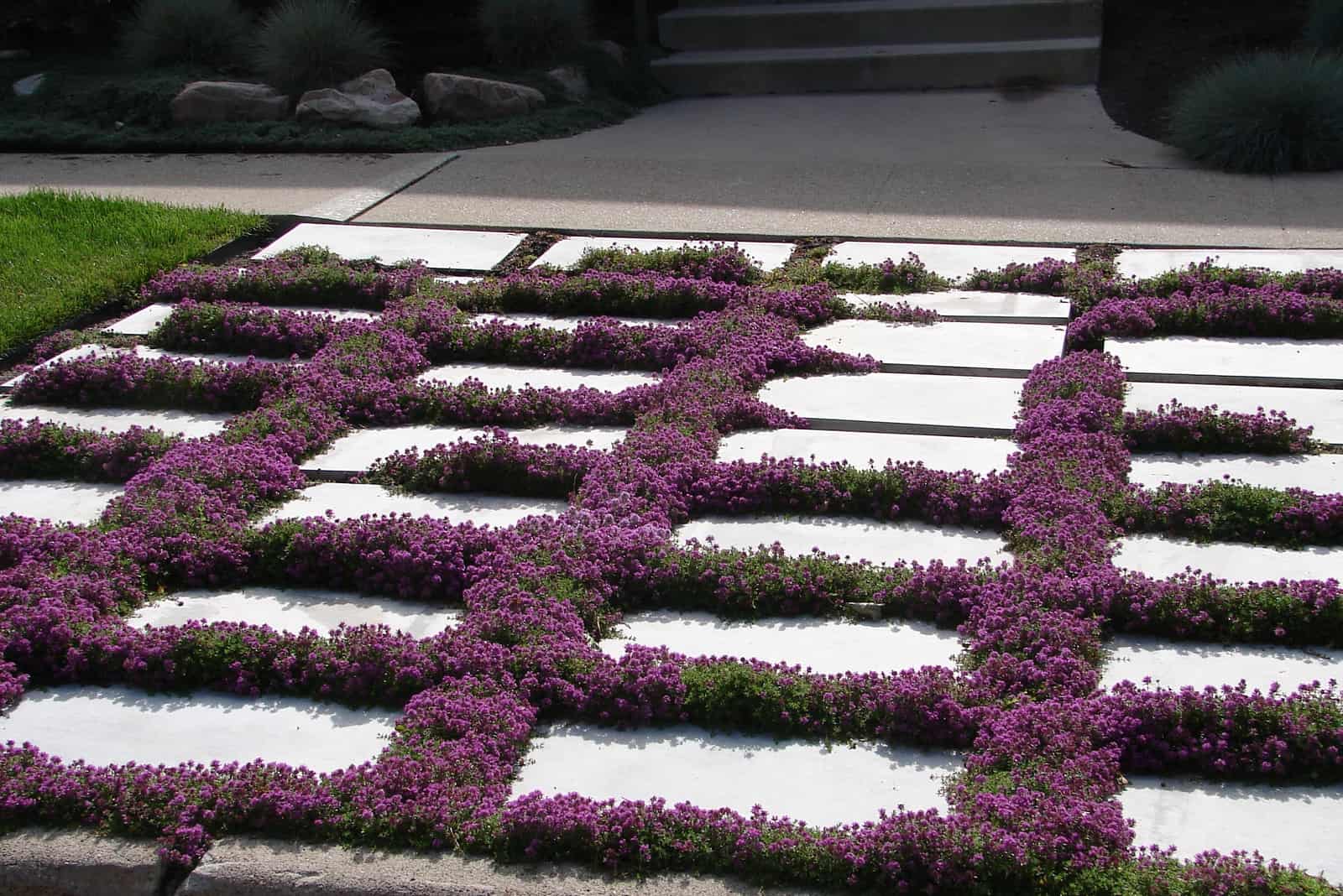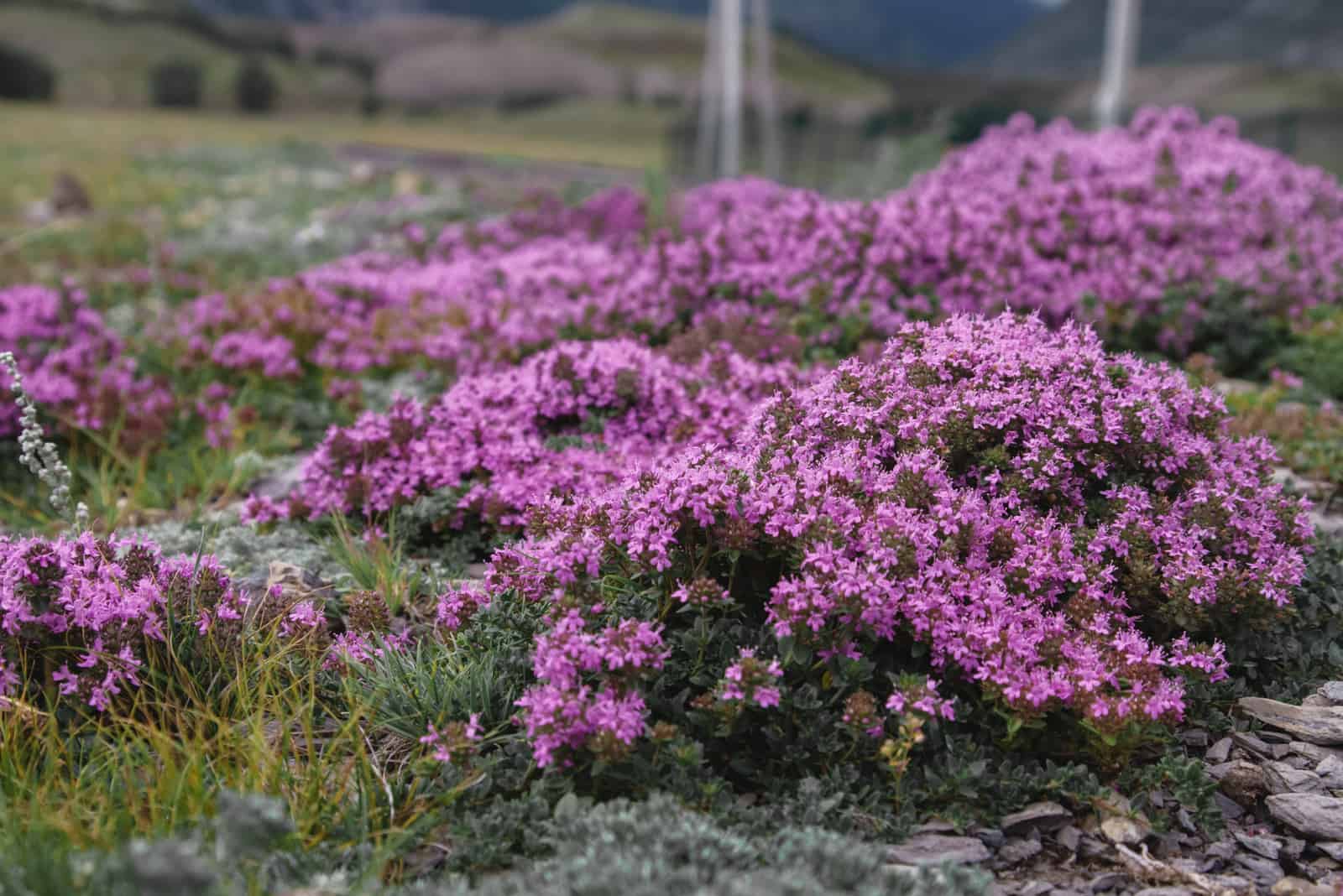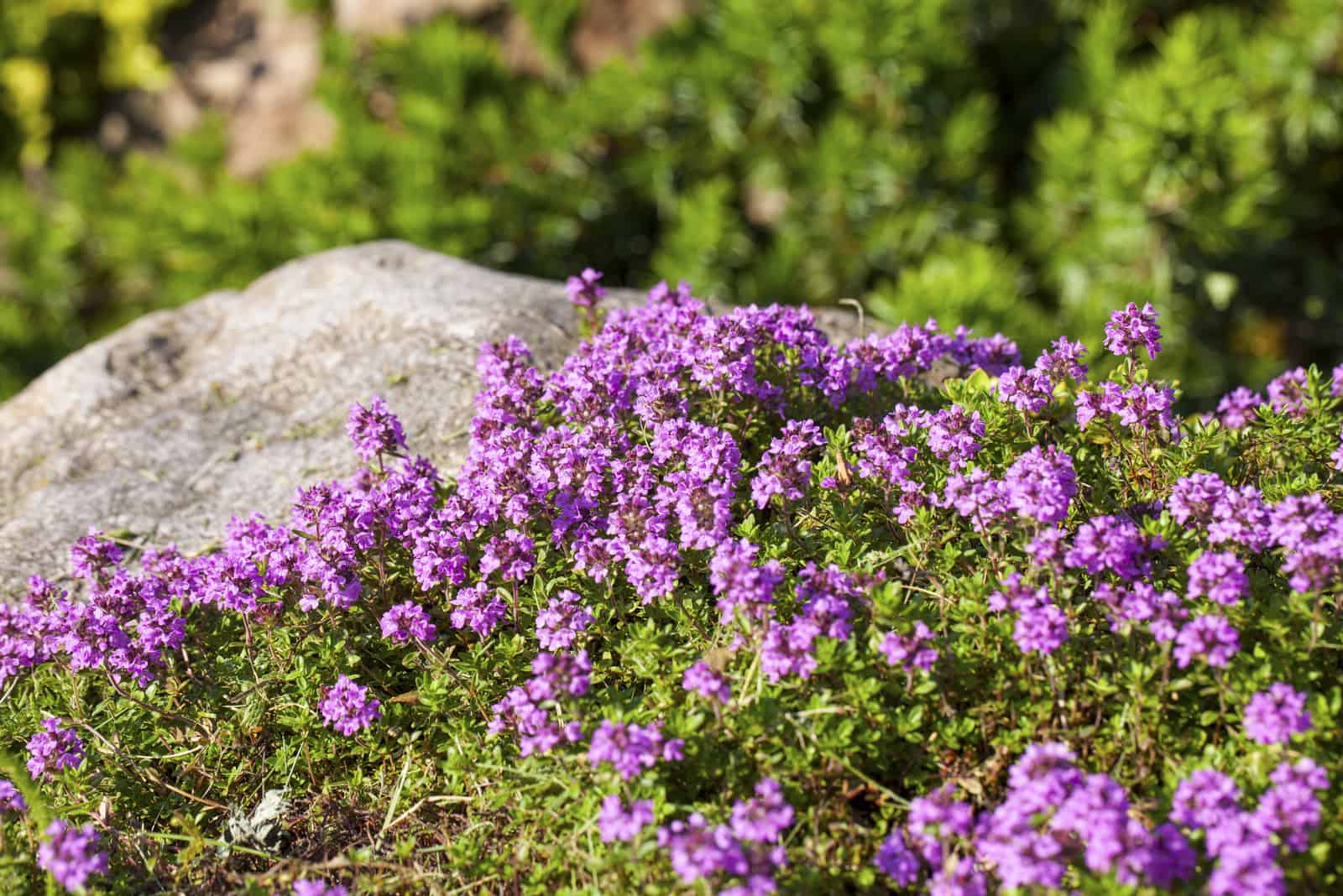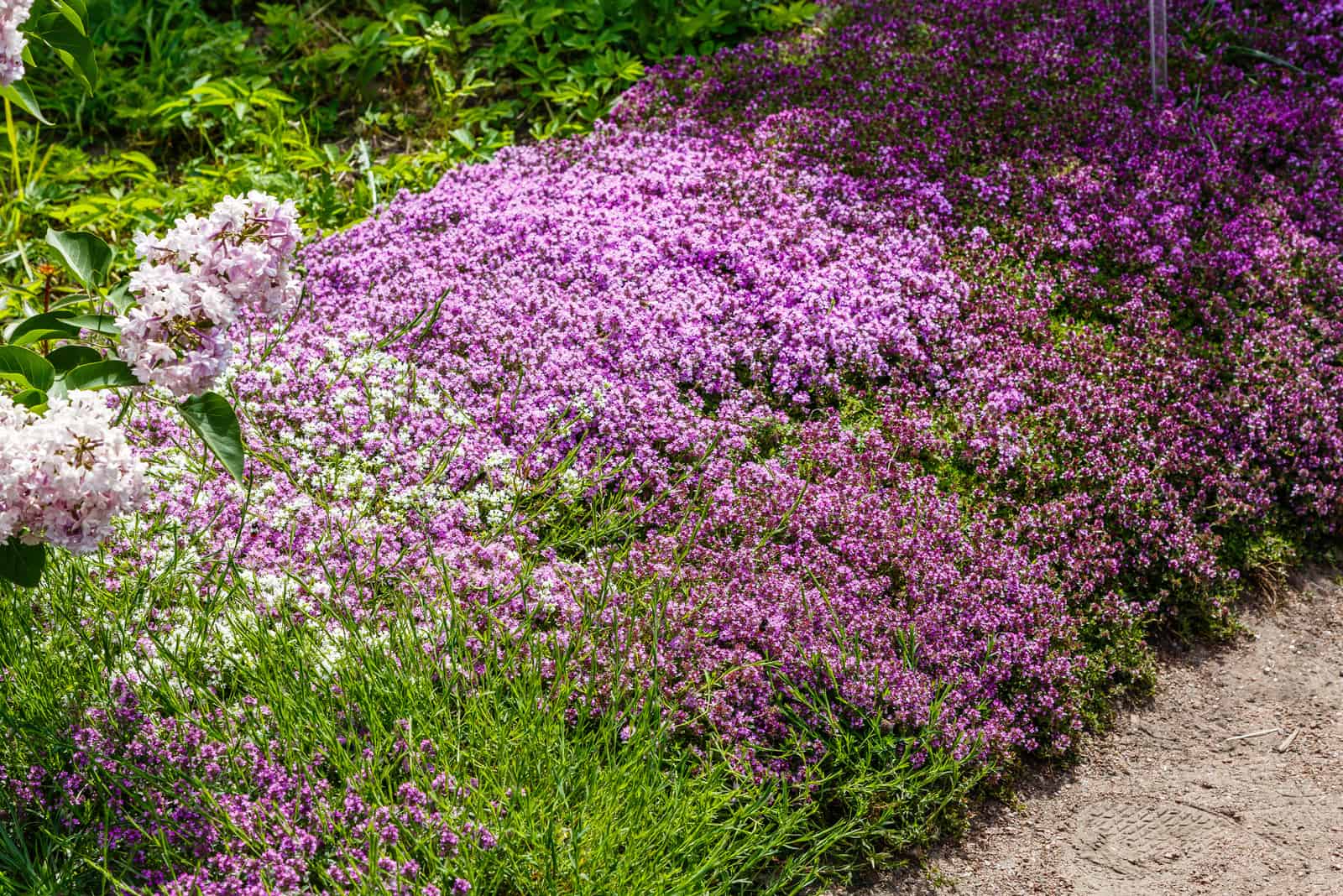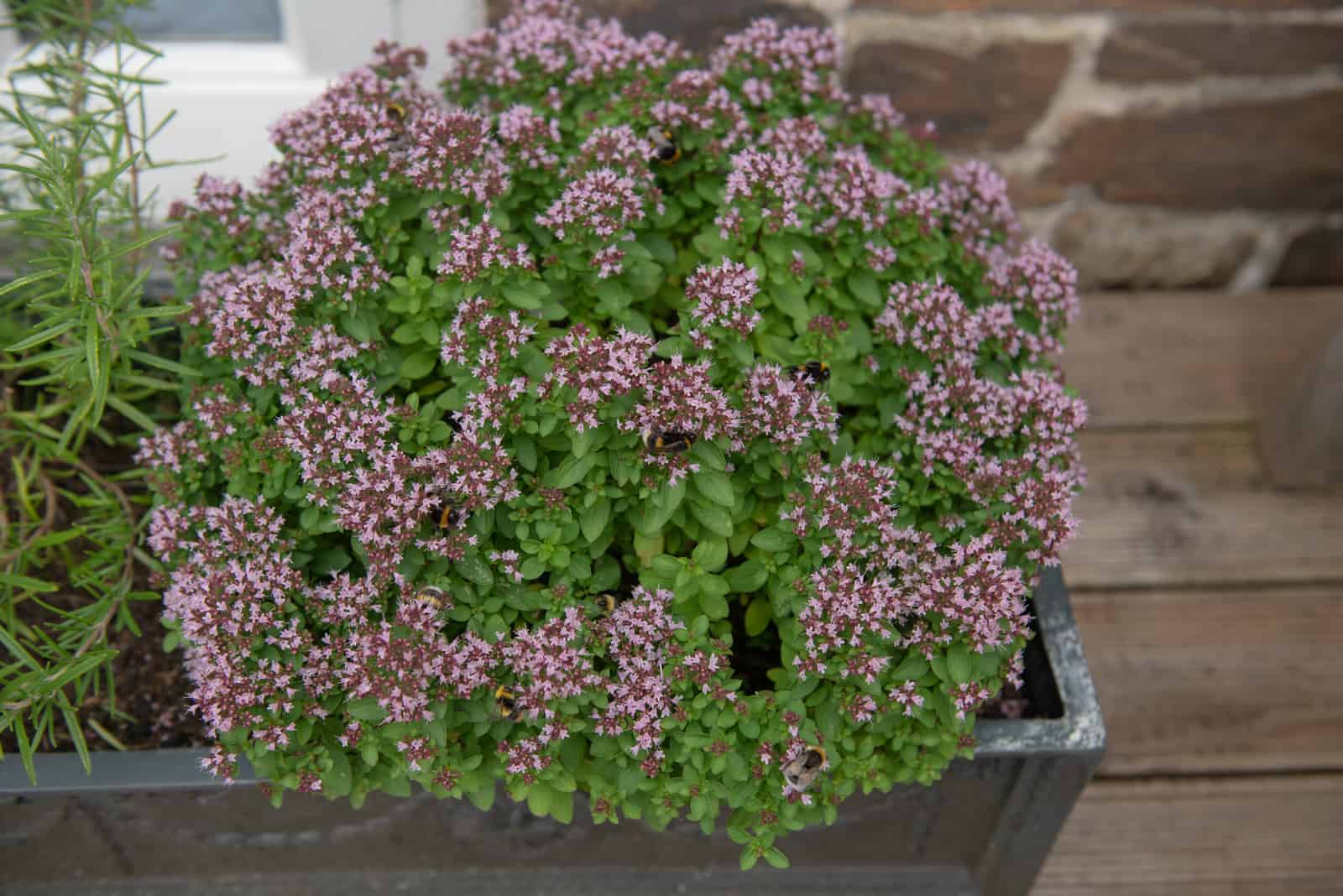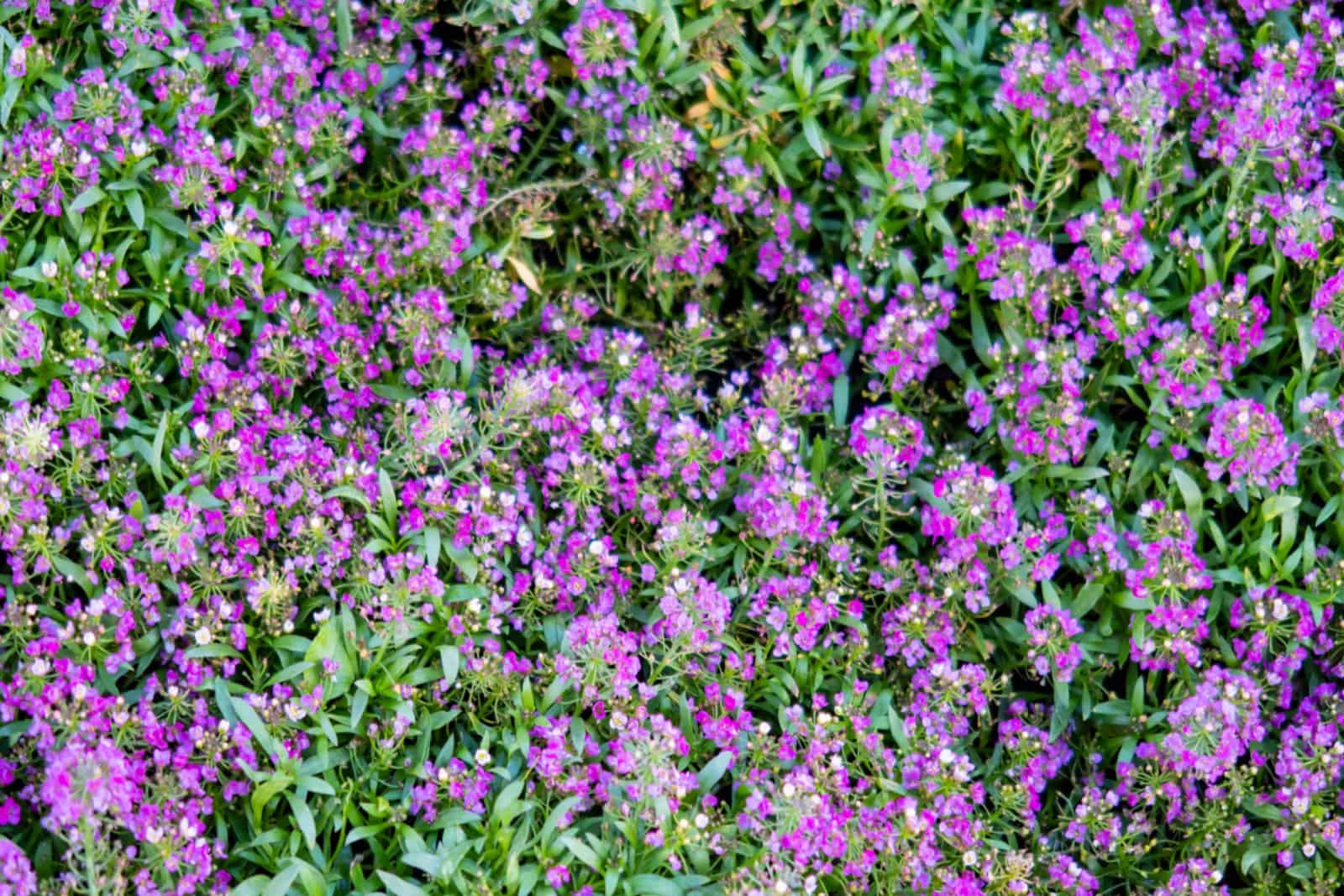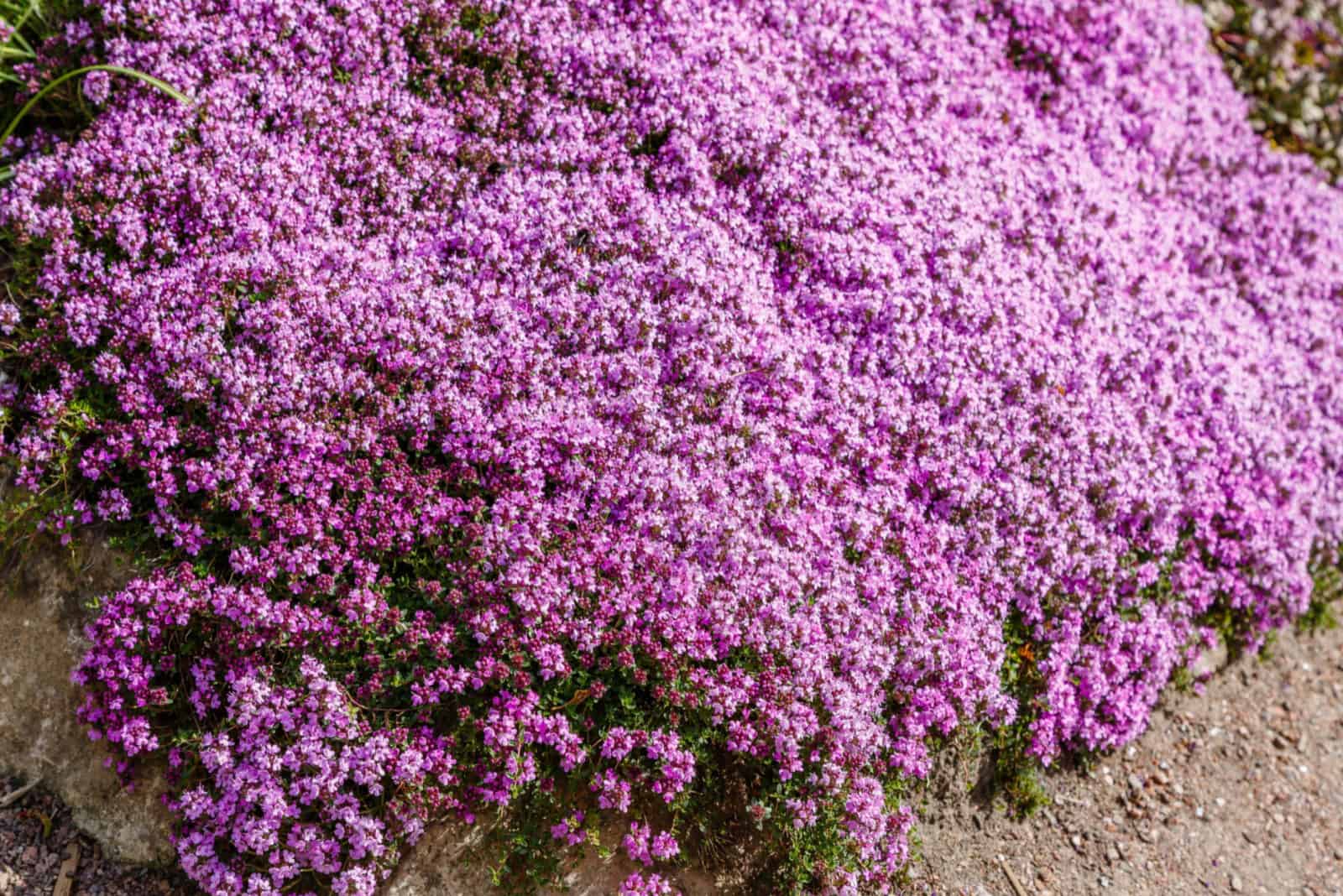Let’s talk about a perennial plant called creeping Thyme. Don’t worry, there isn’t anything creepy about it — they got this name based on their movement habits! These little creepers are often used as ground covers to protect sunny parts of the garden.
The beautiful purple color of creeping thyme has caught the eye of many gardeners, however, they often have doubts about planting creeping thyme in their gardens as there is a possibility they can become invasive and smother the rest of their plants.
Although they have unique growth habits, it doesn’t necessarily mean that they will become invasive.
Keep reading to find out if creeping thyme invasive and loads more!
Is Creeping Thyme Invasive?
In order to tell whether creeping thyme is invasive, we have to first look at its growth habits.
The truth is that once you plant creeping thyme, it will grow quickly and spread to the rest of the garden. This is because the plant can propagate by projecting stolons along the ground or developing roots (rhizomes) under the ground.
You will have to prune the plant to maintain its shape from time to time, and you don‘t have to worry about mowing because creeping thyme can only grow up to 2 inches tall!
What makes creeping thyme great as a ground cover is that it can tolerate foot traffic, so it’s perfect for people with kids and pets. In addition to this, it can serve as garden perfume due to its amazing fragrance.
So, let’s cut the chase — is creeping thyme really invasive?
The answer is no; though it will spread fast in a garden, it won’t bother the other plants. Therefore, if you are looking for an attractive ground cover that smells nice and is also deer and rabbit resistant, you should definitely consider creeping thyme!
Everything You Need To Know About Creeping Thyme
Creeping Thyme, also known as Thymus serpyllum, is a perennial plant that belongs to the mint family Lamiaceae. When we say that a plant is perennial, it means that it grows back every year!
This is a thyme variety, and we know that thyme is often used in cooking, which means that by planting creeping thyme you’ll get both stunning ground cover and a new spice for cooking!
This plant produces beautiful flowers in many colors. They are usually purple or pink flowers, but there are some varieties that produce white flowers as well. These are great for contrasting dark green leaves in the background.
These flowers attract pollinators, and are especially important for butterflies. Two species of butterflies—the small blue butterfly and the giant blue butterfly—lay their eggs in the flowers of creeping thyme. The larvae will subsequently develop into adult butterflies after feeding on the leaves.
Creeping thyme can grow normally in USDA zones 4 to 9, though this may vary depending on the variety.
Creeping thyme plants are great for decorating your rock garden, walkways, and stepping stones, but could also be used as a border plant for your garden because they act as deer and rabbit deterrents.
How To Plant Creeping Thyme
There are a few things you must take into consideration when planting creeping thyme. Though this plant can grow in various conditions, it prefers well-draining, nutrient-rich, and loamy soil.
However, it can also grow in different soil types, including sand and rocky soil. They thrive in alkaline soil, so make sure to check the pH levels before planting.
You can grow creeping thyme from either seeds or cuttings.
You should take the cuttings in early summer if you want to plant them; however, if you choose to grow the plant from seeds I would suggest you start the seeds indoors in the early spring.
Once the seeds have sprouted, transplant your new creeper to the garden – just make sure that the last frost date has passed.
How To Grow Creeping Thyme
If creeping thyme is grown in the right climate, you don’t have to worry much about plant care because it’s known for being very hardy and low-maintenance. Check out the general information below, and keep reading to learn more details about taking care of this plant!
[table id=206 /]
Light Requirements
We mainly use these plants as ground covers because they can grow in full sun. These plants originate from hot Mediterranean regions where they adapted to grow in full sunlight for the whole day!
Therefore, if you are considering using creeping thyme as a ground cover plant, definitely choose a sunny area of your garden. If your whole garden isn’t exposed to the sun, don’t worry because they can still grow in partial shade.
Soil Requirements
As we already mentioned, these plants thrive in well-draining and loose soil. You can grow them in loam, sand, or even rocky soil.
Creeping thyme can grow normally in dry soil and doesn’t like wet soil. Though thyme grows faster in nutrient-rich soil, it can also grow in poor soil.
Water Requirements
When it comes to watering requirements, you will have to be more considerate with new plants as they require constant watering. Once they are established, these plants are quite drought-tolerant and you won’t have to water them every day.
I recommend you water them once every ten days during the growing season — this will give the soil enough time to completely dry, which can promote growth.
If you water these plants constantly the soil will be too soggy, which can easily lead to root rot. Root rot is a fungal disease that results from overwatering and can completely destroy your plant.
Fertilizer Requirements
In properly prepared soil, creeping thyme shouldn’t require feeding.
However, you should consider applying slow-release fertilizer at the beginning of the growing season. This way, the nutrients will be continuously released throughout the season and encourage lush foliage and flowering.
Follow the instructions on the packaging to give your plants exactly the right amount of fertilizer. This is important because too much fertilizer can lead to chemical build-up, which can burn the plant’s roots and damage your plant.
Temperature & Humidity Requirements
Remember that these plants are not frost-hardy, so you should wait until late spring or early summer to transplant them outside. Once you have successfully transplanted creeping thyme outside, you‘ll notice that it will spread and grow relatively fast.
This is because temperatures usually range from 68 to 86 degrees Fahrenheit, which is what creeping thyme loves the most!
If the temperature gets colder, you can add mulch to protect the plant from cold damage.
What’s interesting about these ground cover plants is that they don’t like humidity even though they originate from a relatively humid climate.
If you live in a humid environment, the foliage and flowers of the creeping thyme can easily be damaged. To avoid coming into contact with wet soil, add sand or gravel around the base of the plant. When the weather becomes dryer and cooler, the affected plants should recover.
How To Prune Creeping Thyme
The good news is that you won’t have to worry about mowing once you start growing creeping thyme as a ground cover. However, instead of mowing the other tiresome task is going to be pruning.
Even though these are low-growing plants, you will have to frequently prune your creeping thyme if you want it to look nice and tidy.
Trim back the stems of creeping thyme early in the spring to get the plant ready for the upcoming growing season. At the end of the summer, after the flowers have died down, prune once again. Cut the longest, woody stems in half in the late fall after the first frost. In the spring, this kind of pruning promotes brisk, fresh growth.
What Are The Different Varieties Of Creeping Thyme?
There are lots of different varieties of creeping thyme. They are generally the same, however, each produces unique flowers and foliage.
Let’s take a look at some of the varieties to help you choose which type best suits your garden!
“Spicy Orange” Creeping Thyme
In contrast to the other variations, this variety resembles carpet flowers. A variety of creeping thyme called “Spicy Orange” is distinguished by its pink blossoms. The purple carpet and other varieties offer a better groundcover effect than this variety. One of the smallest cultivars, it barely spreads to a diameter of 10 to 12 inches.
Red Creeping Thyme
Magenta blossoms on red creeping thyme, also known as Thymus serpyllum ‘Coccineus’, makes them one of the most attractive varieties out there! This cultivar spreads out swiftly and reaches a diameter of 18 inches. It spreads quickly and grows quite flat. It is known for growing well in rocky soil and can flourish anyplace in the natural habitat of creeping thyme.
Wooly Thyme
The Wooly thyme cultivar, also known as Thymus pseudolanuginosus, is distinguished by its spiral-shaped silver-green foliage and light pink blooms. It is a drought-resistant variety that thrives in USDA hardiness zones 5 to 9, which means it grows better in hot climates.
Pink Chintz
Chintz pink Thyme is a compact, low-growing creeping herb with thick stems of wooly green foliage that blooms salmon-pink flowers in the middle of spring. It is a variety that belongs to the genus Thymus Serpyllum, and it blooms every year. This creeping thyme may grow up to 24 inches in diameter and spread swiftly.
English Thyme
Thymus vulgaris, commonly known as English thyme, is a low-growing shrub with flat, angular, aromatic, green foliage. Garden thyme and common thyme are other names for English thyme. It grows well in USDA zones 5 through 9 and has purple flowers, which is why it is usually planted in gardens!
Purple Carpet
Throughout early to mid-summer, the ends of the stems of Purple Carpet creeping thyme are covered in gorgeous purple blooms. Its spherical, scented leaves are dark green all year long. Gardeners can walk on the purple carpet of blooms without harming the plant because it grows at a low height. This kind extends out to a diameter of 18 inches.
White Creeping Thyme
Thymus paocos ”Albiflorus”, often known as white creeping thyme, has fragrant white blooms and a carpet-like structure. Most plants grow between one and two inches above the surface. It can survive in USDA zone 2 and is more resilient than other types of creeping thyme.
Doone Valley
Thymus Citriodorus, often known as Doone Valley or Lemon thyme, is an aromatic, mat-forming, evergreen subshrub with a pleasing lemony scent. Small, spherical, edible leaves are dark green in color and have beautiful gold tips in the fall and winter. There are several types of lemon thyme, including lime thyme, creeping golden lemon, and lemons with silver edges. Typically, these are added to season teas, salads, and savory foods.
“Archer’s Gold” Thyme
Thymus citriodorus ‘Archers Gold’ is a low-growing, mat-forming thyme with a lemon aroma that blooms in the summer with pink flowers and golden-yellow-green foliage. It’s ideal for use in recipes for chicken and fish — how great is it to use the same plant for both decorative and cooking purposes? This tall, pink-flowered thyme plant is a cultivar whose leaves can reach heights of six to twelve inches.
How To Get Rid Of Creeping Thyme
Sometimes you may get tired of having the same garden for a long time, and just want to change things a bit. Of course, the whole decorating process starts with ground cover.
If you have been growing creeping thyme as a ground cover, you might have some trouble removing it.
As it’s not a weed, you can’t use weed control to try and stop it from spreading.
The best advice I can give you is to completely remove the plant from the ground, including the roots and everything!
The plant cannot spread if there’s no plant to begin with, right?
Frequently Asked Questions
1. Will creeping thyme choke other plants?
Even though this plant spreads by sending runners underground and propagating, it will somehow bypass other plants in your garden. So the answer is no, creeping thyme won’t choke the rest of the plants in your garden.
2. What are the benefits of creeping thyme?
There are numerous benefits to growing creeping thyme. First, you can use it as a ground cover in sunny parts of your garden. When growing it as cover, you will be amazed by all the tiny, colorful flowers that these plants produce, as well as their growth habits.
Even though it spreads easily, it won’t choke other plants in your garden, and you won’t have to worry about mowing it either!
In addition to looking quite lovely, they also have a lovely fragrance, which is the reason why most thymes are added to various cooking dishes. So yeah, you can also use it when cooking as well!
3. What is the best way to kill creeping thyme?
The best way to kill creeping thyme is by digging the plant completely out of the ground — this includes roots and shoots, as well as leaves and stems and flowers!
Make sure that you get rid of all roots as they can easily grow back again.
Don’t waste your money on weed killers because they won’t prevent creeping thyme from growing!
To Sum Up
Now we know the answer to the question “Is creeping thyme invasive?”. It’s a resounding no, so you can consider planting creeping thyme as a ground cover in your garden without worrying if it will bother the rest of your plants.
Creeping thyme is a great way to decorate your garden because it produces lots of tiny and colorful flowers that smell absolutely amazing!
In addition to this, you can also use it in cooking to spice up your food.
What’s also great is that there are lots of varieties that produce differently colored flowers, so you can pick and choose the color you want for your garden!
It is also a low-maintenance plant that can grow in various conditions — you just have to pay attention to watering and pruning to help your creeping thyme thrive!
Creeping thyme is up now, have a lovely day!
Like this post? Share or pin it for later!

